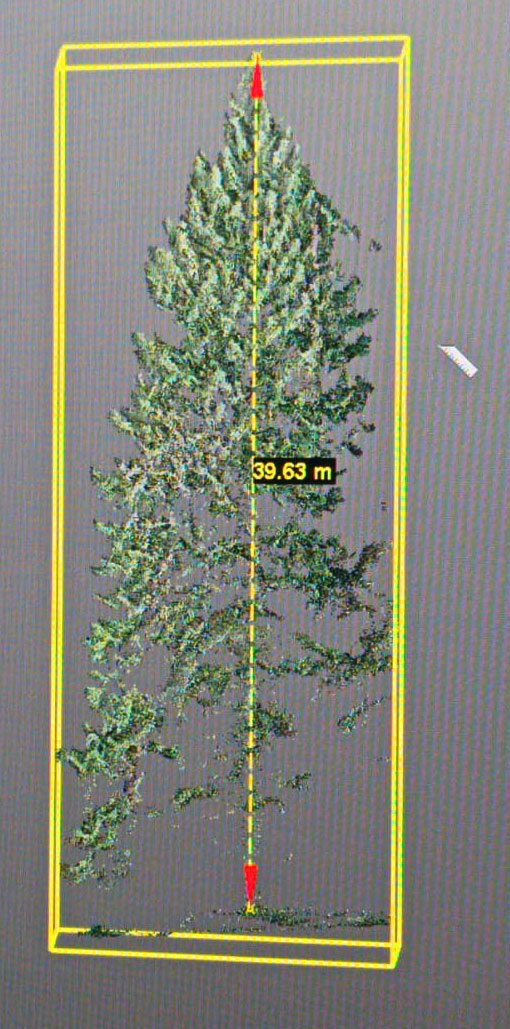
CONIFIR Project
Genetic origin and structural setting of Douglas-fir planted forests in Italy for their management, conservation and valorization
MUR-PRIN 2022 Project - Prot. 20225WRLS3

MUR-PRIN 2022 Project - Prot. 20225WRLS3

Computer reconstruction of a Douglas-fir tree based on LiDAR data (courtesy of: N. Puletti, CREA-FL, Italy).
Planting one billion trees across Europe to sequester atmospheric CO2 and mitigate climate change requires information on the genetic diversity of forest reproductive materials. Unfortunately, in some cases the geographic provenance and the genetic make-up of propagation materials are neglected due to lack of knowledge or limited resources. The introduction of Douglas-fir [Pseudotsuga menziesii (Mirb.) Franco] has been very successful, with many seed sources (i.e., provenances) from the native range that have been tested across different countries. However this species has been often planted on each country independently and very little information is available concerning the genetic make-up of forest materials. Only in the late 1960s, a broad programme was set up by the International Union of Forest Research Organisations (IUFRO). Even if 182 provenances of Douglas-fir covering the whole native range were planted across Europe with a systematic scheme in common garden experiments, the long-term national experiments were not traced back to their parent populations from the native range. According to the current national forest inventory (INFC 2005) and the most recent literature, Douglas-fir trees have been found in approximately 50 stands with a partial overlap between research plots (20 sites) and forest inventory plots (52 records) from North Calabria to Piedmont. The aim of this project is to fill the existing gap of knowledge on the origin and the genetic characteristics of current Douglas-fir stands in Italy by acquiring a structured set of spatial, molecular and structural data. The genetic structure of Italian stands will be characterised using 13 highly polymorphic, unlinked nuclear simple sequence repeats (nuSSRs) markers and traced back to their parent populations from the native range. Genotyping will be combined with terrestrial laser scanning data in order to evaluate the growth performances of different provenances and the within-stand competition dynamics. Finally, the quality of the achieved data with different sampling schemes will be evaluated to derive insight on how planted forests should be tackled in comparison with natural stands.
The collected information on the genotypes available in Italy, their origin and adaptive/competitive performances in the Mediterranean environment will support a genetic-based management of Douglas-fir stands. Sampling simulations combined with the genetic information of extant trees will help design appropriate practices for seed collection used as propagation material in reforestation activities. Species-specific Universal Response Functions will be generated as a tool to support forest management. The whole set of novel data and models will be freely available through an online georeferenced, relational database and the expected results will align Italy to other European countries (e.g. Austria and Germany) where similar investigation approaches have been successfully implemented.